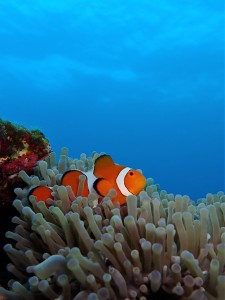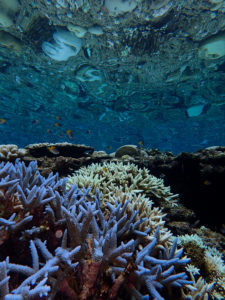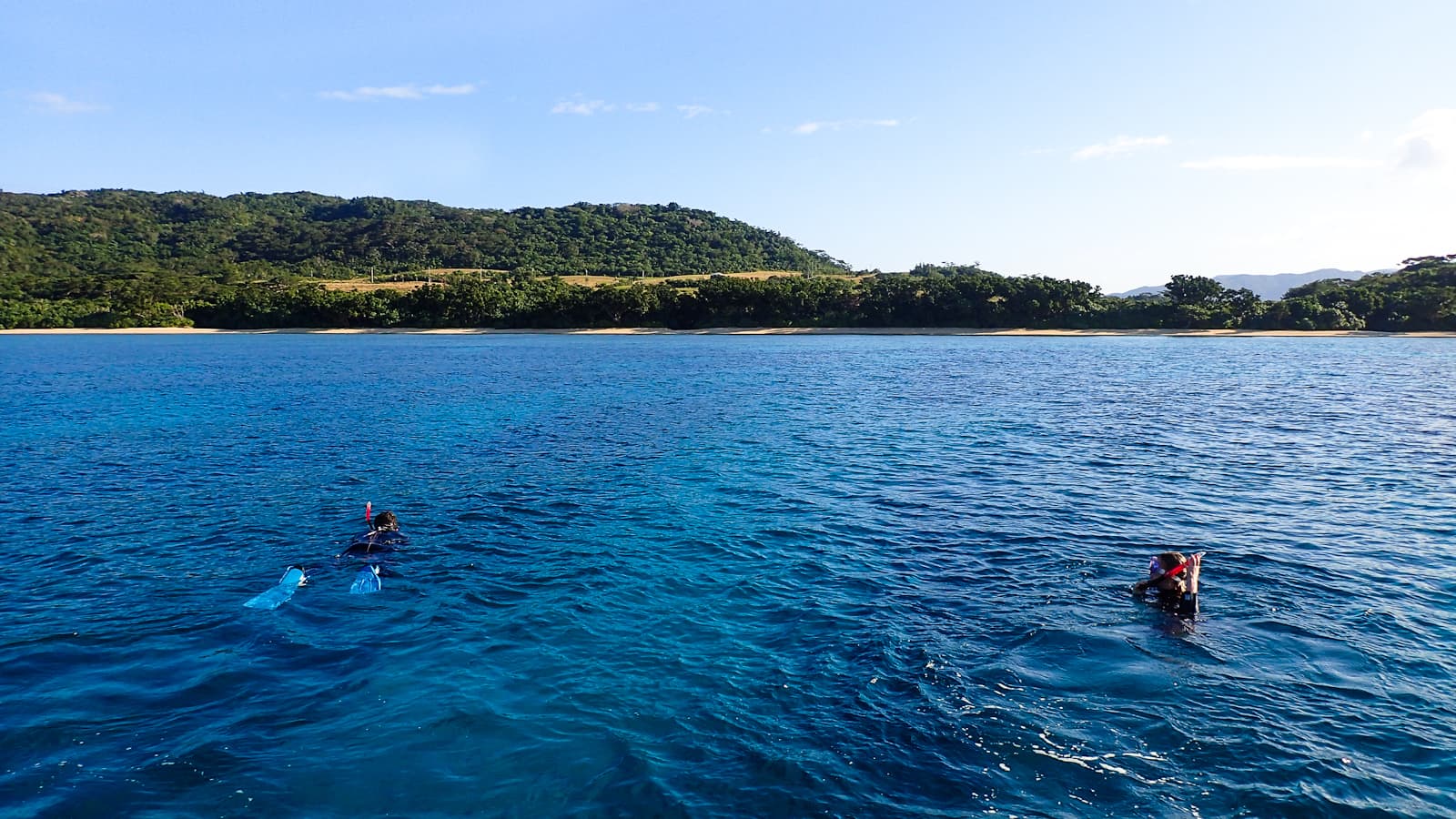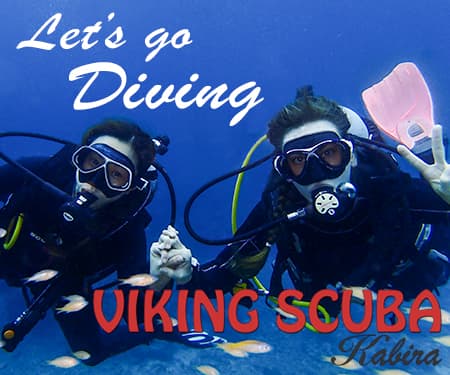If you are a beginner snorkeler, it is recommended that you take a tour to get the most out of your day. Not only will a tour take you to the best reefs in the area, your guide will also show you how to use the equipment, inform you of possible dangers and how to snorkel responsible so that you do not damage the reefs.
Marine Life
Ishigaki’s coastline is teaming with life and tropical fishes in all kinds of colors and shapes swim lively in and out of the corals. What you see will depend on where you go snorkeling, but some commonly seen fishes are Sea Goldies, Blue-green Damselfishes and Butterflyfishes. It is also not unusual to see Pufferfishes, Sea Snakes and Moray Eels. If you are lucky, you might spot a Turtle.
Anemonefishes (Nemos) can be found in many places. Do not get too close to their nests because some of them can be very protective, their bite is not dangerous but can hurt.
Parrotfishes are also common on the reefs. If you think their colorful scales looks familiar, it might be because they are popularly served as sushi and sashimi on Ishigaki. It is a local specialty not commonly found in mainland Japan
Poisonous Scorpion and Stonefishes are also quite common, they will not attack but their camouflage makes them hard to spot. You can read more about them in the safety guide.
Manta Rays
To see the Manta Rays, you will have to join a tour out to Manta Point off the northern tip of Kabira.
Do not attempt to swim to the Manta Points from shore. It is a fair distance away and many boats move in that area making it dangerous. There could also be currents sweeping you out into the big ocean.
Most tour operators will include a trip to Manta Points in season.
Where to go
While it is possible to spot a few tropical fishes on most of the beaches, Yonehara is by far the most popular one for snorkeling. The coral reefs are very close to the shore, especially during low tide, so be careful as you swim. Also, be sure to head warning about currents and Habu jellyfish
If you go on a tour, there are many different snorkeling courses to choose from. Some including trips to other islands and/or other activities as well.
What to Bring
Mask, snorkel, and fins. Make sure the mask fits by putting it on your face without the straps, inhale and it should stick if it is a good seal. The fins will make it easier for you to swim around, for snorkeling a full-foot fin will be lighter than an open-heel one. You could also bring anti-fog to keep your mask from fogging up, or just spit in the mask, rub it around, and then rinse it. Less elegant but works just as good.
Do bring water-resistant sunblock as it is easy to bet burned even in wintertime when you’re out in the water. Wearing a rash guard or wetsuit is an excellent way to keep you safe from both the sun and jellyfish stings.
Towel, a towel is the most useful thing you can bring on any beach trip. You can wrap it around you to keep you warm after you bound across the pristine reefs; you can lie on it on the brilliant star sand beach of Taketomi; you can sleep under it during the hotter hours of the day; you can use it as a sail if you get tired while doing stand-up paddle boarding; swing it around like a crazy person to fight off those pesky mosquitoes; wrap it around your head to look silly; you can wave it as a distress signal, and of course you can dry yourself with it if you happen to get wet while snorkeling.
From May to October Habu (Box) jellyfish swims around the islands and they do get close to the shore. If you choose to snorkel at a beach without protective nets, be very careful and make sure you wear protective clothing, such as a rash guard. You can read more about safety here
If you like this guide and found it useful, I would be very happy if you would read and try to follow the advice given below. Thank you!
 Protect the Reef
Protect the Reef
Together we can keep the reefs beautiful and clean!
Please, remember that corals grow very slow and it takes thousands of years to form a new coral reef from scratch. Do not stand on the reef, do not touch the reef, do not bring anything from the reef, and please DO bring your rubbish back with you.
By doing this you will not only keep the reefs safe; you will keep yourself safe as well! Like many other tropical islands, Ishigaki has a few poisonous inhabitants that you can read more about under Stay Safe.
If you do get tired while swimming, try to find a sandy patch or a flat stone top (with no coral) to stand on. If you are an inexperienced swimmer/snorkeler, consider joining a tour where you will get expert advice and support.
Also, I know it’s really tempting to bring home a small shell or some sand for a souvenir, but please consider that Ishigaki and the Yaeyama islands are visited by hundreds of thousands of tourists every year. Most of them do NOT bring anything back with them (or we would already be a barren island) so please ask yourself if what looks like a pretty treasure now, honestly, will not end up forgotten in a drawer back home.

